Abstract
We evaluated the effects of two daily activity schedules on 2 participants' rates of aberrant behavior and their compliance. Functional analysis identified the operant function of the participants' aberrant behaviors to be escape from tasks. Participants were taught to use stimuli contained in daily schedules, and were tested based on a modified stimulus-equivalence model that consisted of flash cards and activity schedules comprised of words or photographs that corresponded to the participants' daily activities. On pretests, the participants demonstrated simple and conditional discriminations with the photographs but not with the printed stimuli. A time-delay procedure was used to teach the participants to name the flash cards. Following training, the printed activity schedules corresponded to lower rates of problem behavior and higher rates of compliance than the photographic activity schedules. Performance on posttests indicated the establishment of functional classes of stimuli involving the flash cards and activity schedules even though this type of correspondence was not directly trained.
Keywords: escape-maintained aberrant behavior, escape extinction, functional analysis, predictability, stimulus equivalence
Full text
PDF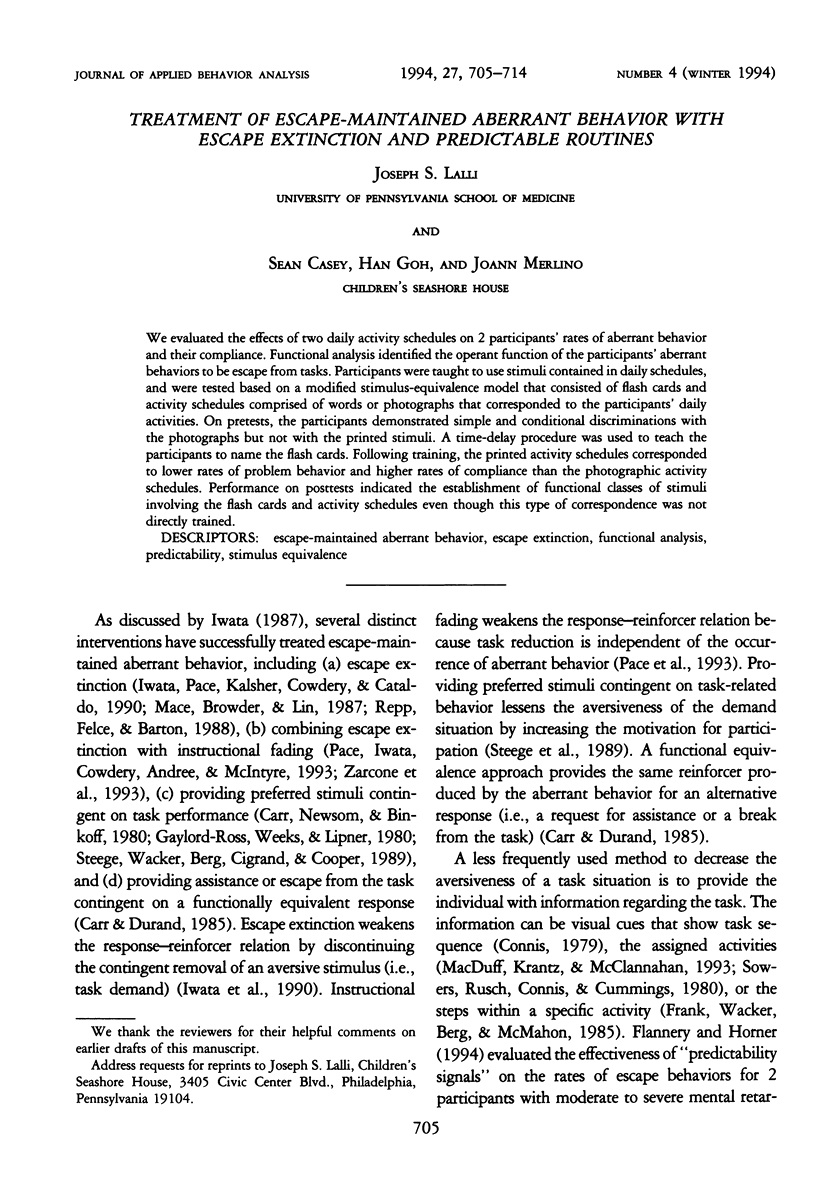


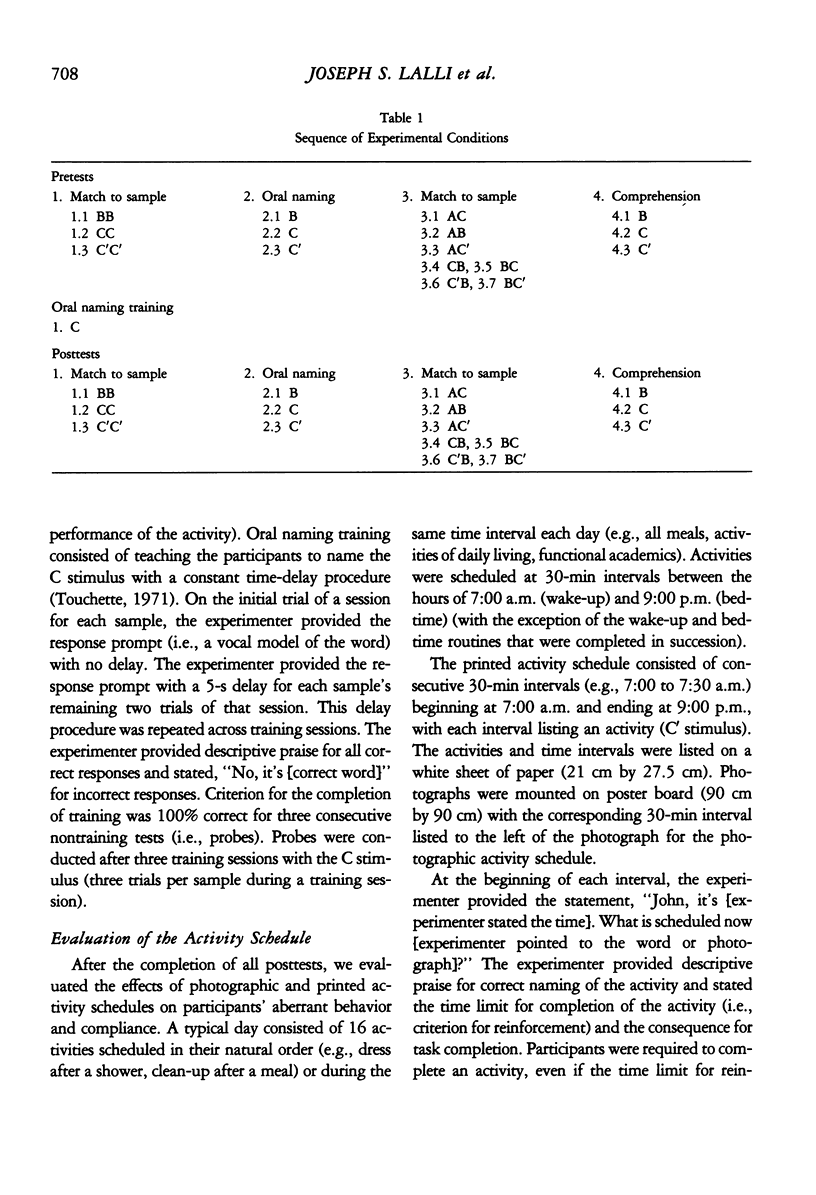
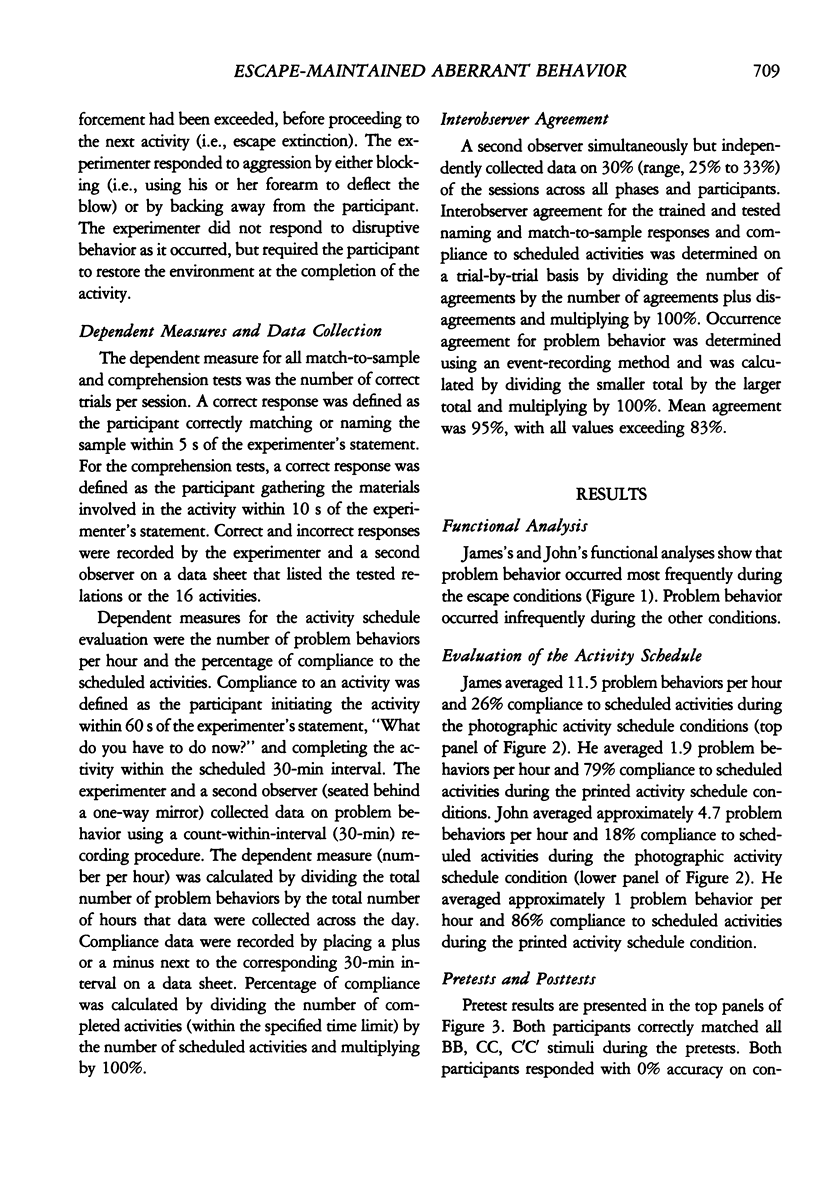

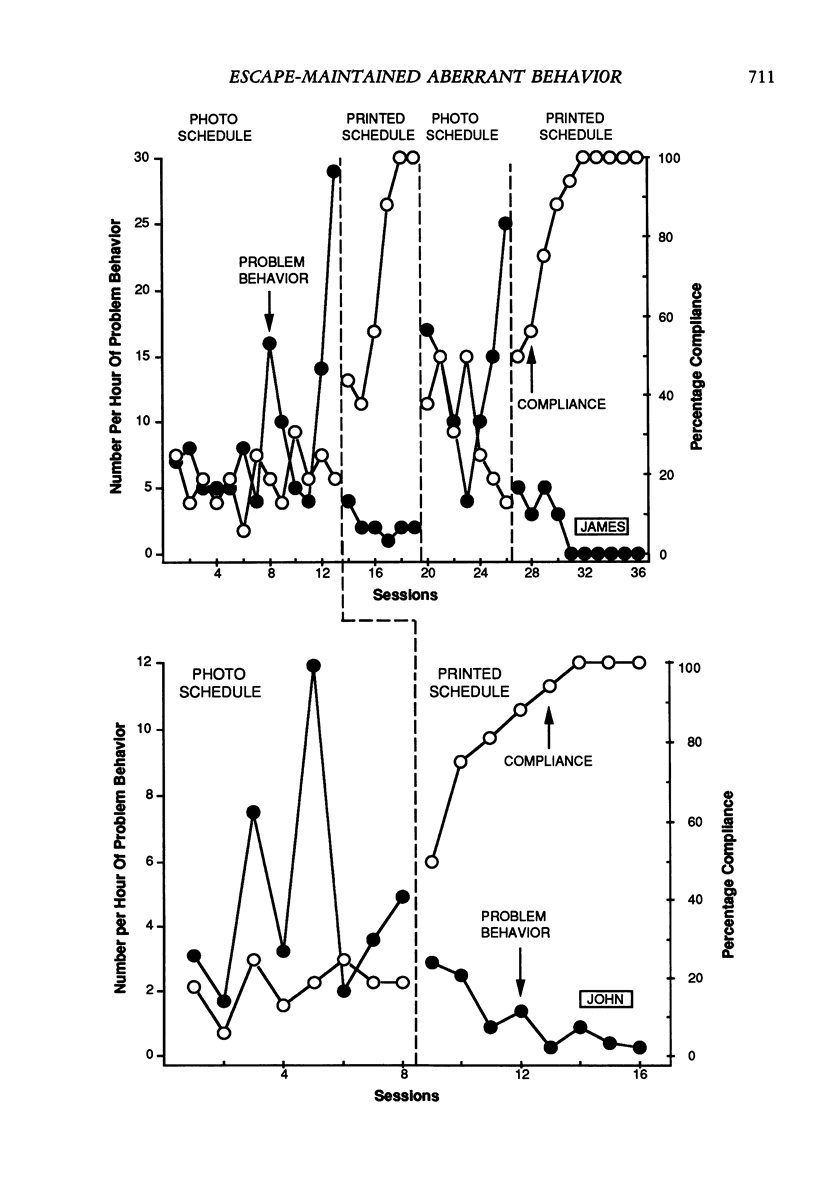

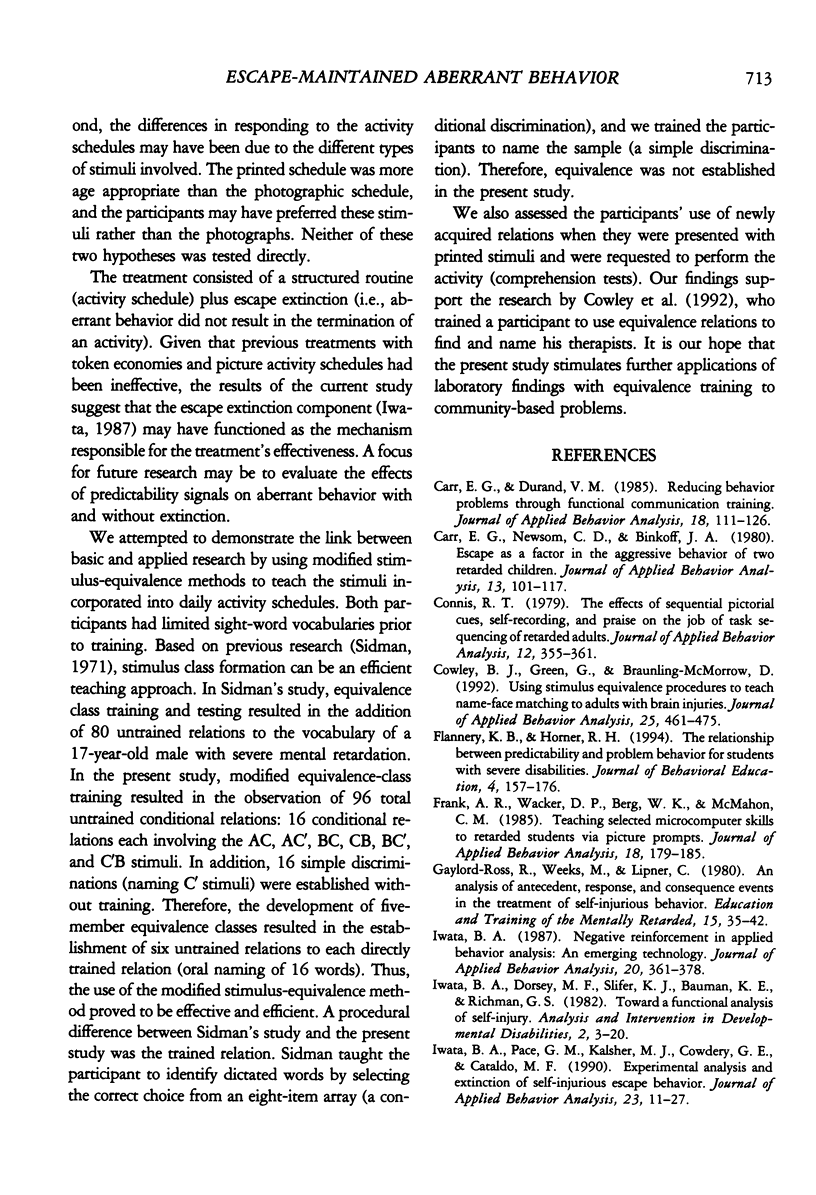
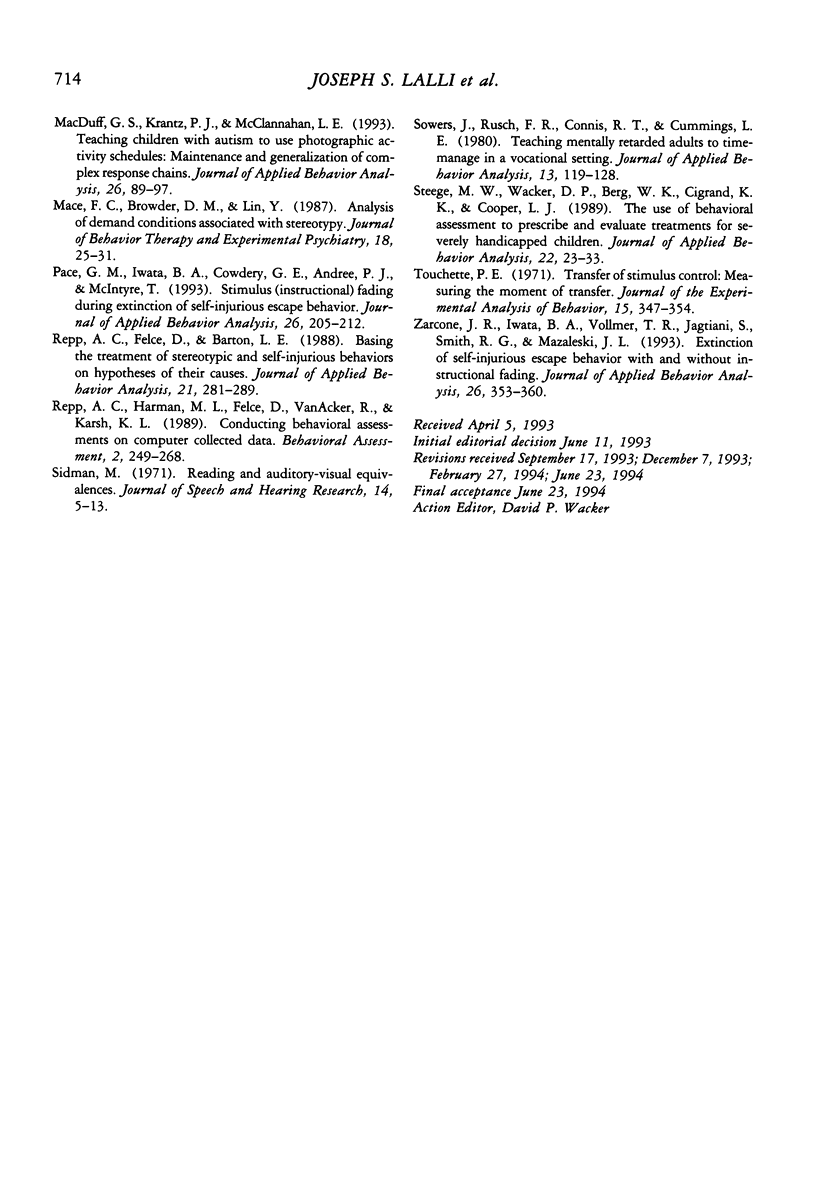
Selected References
These references are in PubMed. This may not be the complete list of references from this article.
- Carr E. G., Durand V. M. Reducing behavior problems through functional communication training. J Appl Behav Anal. 1985 Summer;18(2):111–126. doi: 10.1901/jaba.1985.18-111. [DOI] [PMC free article] [PubMed] [Google Scholar]
- Carr E. G., Newsom C. D., Binkoff J. A. Escape as a factor in the aggressive behavior of two retarded children. J Appl Behav Anal. 1980 Spring;13(1):101–117. doi: 10.1901/jaba.1980.13-101. [DOI] [PMC free article] [PubMed] [Google Scholar]
- Connis R. T. The effects of sequential pictorial cues, self-recording, and praise on the job task sequencing of retarded adults. J Appl Behav Anal. 1979 Fall;12(3):355–361. doi: 10.1901/jaba.1979.12-355. [DOI] [PMC free article] [PubMed] [Google Scholar]
- Cowley B. J., Green G., Braunling-McMorrow D. Using stimulus equivalence procedures to teach name-face matching to adults with brain injuries. J Appl Behav Anal. 1992 Summer;25(2):461–475. doi: 10.1901/jaba.1992.25-461. [DOI] [PMC free article] [PubMed] [Google Scholar]
- Frank A. R., Wacker D. P., Berg W. K., McMahon C. M. Teaching selected microcomputer skills to retarded students via picture prompts. J Appl Behav Anal. 1985 Summer;18(2):179–185. doi: 10.1901/jaba.1985.18-179. [DOI] [PMC free article] [PubMed] [Google Scholar]
- Iwata B. A. Negative reinforcement in applied behavior analysis: an emerging technology. J Appl Behav Anal. 1987 Winter;20(4):361–378. doi: 10.1901/jaba.1987.20-361. [DOI] [PMC free article] [PubMed] [Google Scholar]
- Iwata B. A., Pace G. M., Kalsher M. J., Cowdery G. E., Cataldo M. F. Experimental analysis and extinction of self-injurious escape behavior. J Appl Behav Anal. 1990 Spring;23(1):11–27. doi: 10.1901/jaba.1990.23-11. [DOI] [PMC free article] [PubMed] [Google Scholar]
- MacDuff G. S., Krantz P. J., McClannahan L. E. Teaching children with autism to use photographic activity schedules: maintenance and generalization of complex response chains. J Appl Behav Anal. 1993 Spring;26(1):89–97. doi: 10.1901/jaba.1993.26-89. [DOI] [PMC free article] [PubMed] [Google Scholar]
- Mace F. C., Browder D. M., Lin Y. Analysis of demand conditions associated with stereotypy. J Behav Ther Exp Psychiatry. 1987 Mar;18(1):25–31. doi: 10.1016/0005-7916(87)90068-1. [DOI] [PubMed] [Google Scholar]
- Pace G. M., Iwata B. A., Cowdery G. E., Andree P. J., McIntyre T. Stimulus (instructional) fading during extinction of self-injurious escape behavior. J Appl Behav Anal. 1993 Summer;26(2):205–212. doi: 10.1901/jaba.1993.26-205. [DOI] [PMC free article] [PubMed] [Google Scholar]
- Repp A. C., Felce D., Barton L. E. Basing the treatment of stereotypic and self-injurious behaviors on hypotheses of their causes. J Appl Behav Anal. 1988 Fall;21(3):281–289. doi: 10.1901/jaba.1988.21-281. [DOI] [PMC free article] [PubMed] [Google Scholar]
- Sidman M. Reading and auditory-visual equivalences. J Speech Hear Res. 1971 Mar;14(1):5–13. doi: 10.1044/jshr.1401.05. [DOI] [PubMed] [Google Scholar]
- Sowers J. A., Rusch F. R., Connis R. T., Cummings L. E. Teaching mentally retarded adults to time-manage in a vocational setting. J Appl Behav Anal. 1980 Spring;13(1):119–128. doi: 10.1901/jaba.1980.13-119. [DOI] [PMC free article] [PubMed] [Google Scholar]
- Steege M. W., Wacker D. P., Berg W. K., Cigrand K. K., Cooper L. J. The use of behavioral assessment to prescribe and evaluate treatments for severely handicapped children. J Appl Behav Anal. 1989 Spring;22(1):23–33. doi: 10.1901/jaba.1989.22-23. [DOI] [PMC free article] [PubMed] [Google Scholar]
- Touchette P. E. Transfer of stimulus control: measuring the moment of transfer. J Exp Anal Behav. 1971 May;15(3):347–354. doi: 10.1901/jeab.1971.15-347. [DOI] [PMC free article] [PubMed] [Google Scholar]
- Zarcone J. R., Iwata B. A., Vollmer T. R., Jagtiani S., Smith R. G., Mazaleski J. L. Extinction of self-injurious escape behavior with and without instructional fading. J Appl Behav Anal. 1993 Fall;26(3):353–360. doi: 10.1901/jaba.1993.26-353. [DOI] [PMC free article] [PubMed] [Google Scholar]


